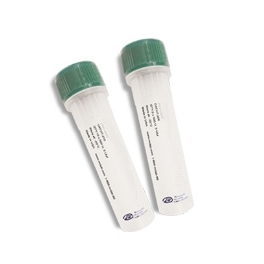 View full size
View full size
- Analýza nukleových kyselin
- Analýza proteinů
- Biochemické reagencie
- Enzymy
- Editování genů
- Klonování
- Klinická diagnostika
- STR kity - identifikace osob, určení otcovství a příbuznosti
- Laboratorní příslušenství
- Software
- A&A Biotechnology
- AdvancedSeq
- BioDynami
- Plant Cell Technology
Novinky
-
XXXV. Izakovičov memoriál 2025
S potěšením oznamujeme, že se zúčastníme prestižní konference XXXV. Izakovičov memoriál 2025, která se bude konat 8.–10. října 2025 v Grandhotelu Praha v Tatranské Lomnici na Slovensku. Izakovičov me...
Více -
1.československý kongres lékařské genetiky 2025
Na jaře se zúčastníme 1. československého kongresu lékařské genetiky, který se bude konat 2.-4. dubna 2025 v Kulturním a kongresovém centru Elektra v lázeňském městě Luhačovice. Tento jedinečný kong...
Více -
RANK 2025
Navštivte nás na 19. ročníku konference RANK 2025, která se koná 19. a 20. března v hotelu Zlatá Štika v Pardubicích. Konferenci pořádá Česká společnost klinické biochemie při ČLSJEP ve spolupráci s ...
Více
 View full size
View full size
Description:
Recombinant yeast Protein Disulfide Isomerase is produced in E. coli as a single, non-glycosylated, polypeptide chain, containing 503 amino acids and having a molecular mass of 62.4 kDa. The PDI is fused to a 12 amino acid His-tag (515 a.a. total) at N-terminal and purified by proprietary chromatographic techniques.
Recombinant Yeast Protein Disulfide Isomerase is involved in disulphide-bond formation and isomerization, as well as the reduction of disulphide bonds in proteins. Recombinant PDI has been found to have moderate effects (25-fold) on the rate of oxidative folding of proteins in vitro.
Source: E. coli
Recommended Storage Condition: -20ºC
Physical Appearance:
Sterile filtered liquid form or lyophilized powder
Formulation:
The PDI protein (10mg/ml)solution was lyophilized from PBS pH 7
Solubility:
It is recommended to reconstitute the lyophilized PDI in sterile 18MΩ-cm H2O (not less than 100µg/ml), which can then be further diluted to other aqueous solutions.
Stability:
Lyophilized Protein Disulfide Isomerase, although stable at room temperature for 3 weeks, should be stored desiccated below -18°C. Upon reconstitution Human PDI should be stored at 4°C between 2-7 days and for future use below -18°C. For long term storage it is recommended to add a carrier protein (0.1% HSA or BSA).
Please avoid freeze-thaw cycles.
Purity:
Greater than 99.0% as determined by RP-HPLC.
Reductase Activity:
0.001 650nm/ min-2. By measuring the turbidity increase at 650 nm due to insulin reduction (Holmgren, A. (1979) J. Biol. Chem. 254, 96279632). The activity is expressed as the ratio of the slope of a linear part of the turbidity curve to the lag time (Mart´nez-Galisteo, E., Padilla, C. A., Garcia-Alfonso, C., Lo´pez-Barea, J., and Barcena, J. A. (1993) Biochimie (Paris) 75, 803809).
Isomerase Activity:
0.5 µmol active RNase A min-1 µmol PDI-1. According to the re-activation of reduced and denatured RNase A (Lyles, M. M. and Gilbert, H. F. (1991) Biochemistry 30, 613-619).
Košík
Platební brána



